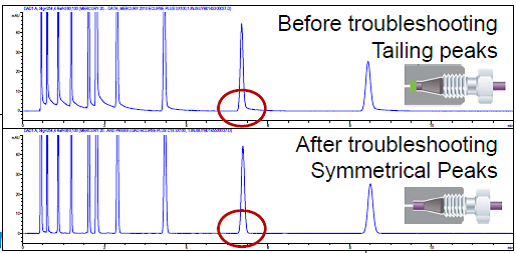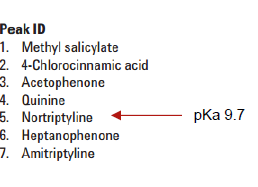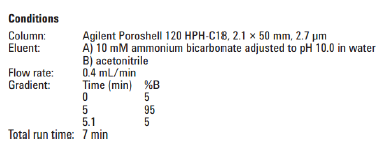Avoid chromatography heartbreak: LC troubleshooting and optimization

Complete the form below to unlock access to ALL audio articles.
Commonly used to separate, identify, and quantify the individual components of a mixture, liquid chromatography (LC) is a vital tool in the arsenal of analytical techniques used for research and development, as well as quality control across a wide range of industries.
The analytical requirements in many of these sectors – from food safety to pharmaceuticals – have become ever more challenging with, for example, more complex matrices to analyze and lower detection limits required. For many lab technicians, LC is one of many techniques they need to master. For them, ensuring their results are accurate and reproducible is a must, but being able to increase instrument uptime, avoid rerunning samples, and increase lab throughput are now their daily challenges.
In this article, we look at some common issues that can create “chromatography heartache” and compromise these goals. Some fall into the troubleshooting category, others are more about system optimization, but all can have a real impact on the quality of chromatography achieved.
Troubleshooting poorly connected fittings
Poorly connected fittings have long been recognized as a leading cause of chromatography issues, leading to peak broadening, splitting, and tailing, as well as loss of resolution. The effect is seen both in UHPLC and HPLC setups. To simplify connectivity, many labs have adopted finger-tight polymeric (PEEK) fittings. Traditional stainless fittings typically require two wrenches to tighten, while at the same time requiring proper alignment of tubing into the column inlet. The process is not straightforward, especially in tight spaces, and typically requires some expertise to get right. It’s easy to get the alignment wrong, resulting in leaks, or the creation of a mixing chamber ahead of the column (Figure 1). 
Figure 1: Potential fittings issues include leaking connection (top) and mixing chamber (middle). With the tubing flush to the column (bottom), there is no dead volume and the connection is perfect.
In addition, stainless fittings may also be irreversibly swaged onto the tubing. For fittings that are incorrectly aligned, both the fitting and tubing must be discarded, resulting in time wasted, frustration, and financial loss.
Agilent’s InfinityLab Quick Connect fittings address these challenges. A unique design and proprietary spring-loaded closure mechanism produces a sure connection with zero dead volume. The fittings use a simple lever mechanism to provide a secure connection up to 1300 bar, without using wrenches and tools. This feature makes them incredibly easy to use and therefore a valuable asset to less experienced chromatographers. For space-limited situations where connections are too tight to use this design, an alternative fitting that also incorporates the same unique spring-loaded mechanism is also available (Agilent’s InfinityLab Quick Turn fittings). Quick Connect and Quick Turn fittings create a reliable connection every time, even after 200 reconnections.
In a troubleshooting situation, poor chromatography performance is not always readily tracked to connections. Figure 2 shows how capillary tubing being flush with the ferrule, rather than seated properly to the inlet, caused tailing on all peaks (top chromatogram), resulting in a void that acted as a mixing chamber ahead of the column. By ensuring correct connections (bottom chromatogram), peak shape became symmetrical.  Figure 2: Before and after – top chromatogram: tailing peaks. Bottom chromatogram: symmetrical peaks
Figure 2: Before and after – top chromatogram: tailing peaks. Bottom chromatogram: symmetrical peaks
Optimizing column lifetime
Column lifetime can vary dramatically depending on sample conditions. The pH, temperature, buffer choice, and the cleanliness of samples can all have an impact on column lifetime.



Figure 4: Chromatogram from InfinityLab Poroshell HPH-C18 column on an ammonium bicarbonate gradient at pH 10.

